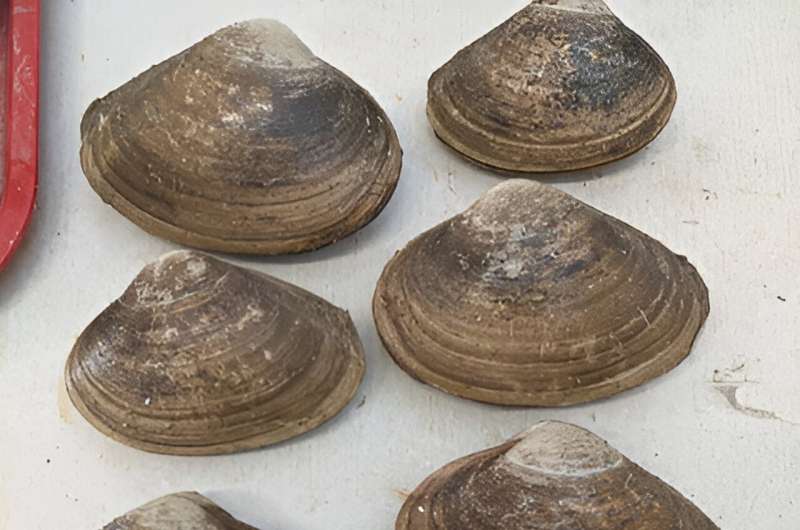The Return of Surf Clams Along Virginia's Coast

April 16, 2024
This article has undergone extensive review adhering to Science X's editorial process and guidelines. During the review, special attention was paid to verify the facts, cross-check the sources, and make sure the content has been proofread and is coming from a credible source.
This article is written by Kitta MacPherson from Rutgers University.
The Atlantiс surf clam, a key component in clam chowder and fried clam strips and a valuable economic resource, has made a significant comeback in Virginia waters, effectively reversing a decline that began over twenty years ago.
Scientists from Rutgers have carried out a detailed study on surf clams obtained from an area around 45 miles eastward from the mouth of the Chesapeake Bay. They have found the species to be flourishing and expanding. Possible reasons for this resurgence could be improved environmental conditions or adaptations made by the clams, according to the report, which was published in the Estuaries and Coasts journal.
The findings have come as a pleasant surprise.
Daphne Munroe, an associate professor in the Department of Marine and Coastal Sciences at the Rutgers School of Environmental and Biological Sciences and a writer of the study, expressed, 'This is unexpected and pleasant news. We had assumed these clams were extinct in this region. However, our findings show a higher number of clams than we anticipated, and they appear to be thriving.'
These surf clams started vanishing from Virginia's coastal waters in the late 1990s due to rising water temperatures. By the early 21st century, their numbers had dwindled so much that fishing for them no longer made economic sense.
In 2021, Munroe received an unexpected call from a fellow fisherman.
Recalling the conversation, Munroe said, 'He mentioned several boats fishing for surf clams off Cape Charles. I was surprised and wanted to see these clams for myself.'
After examining the clams, Munroe kick-started a new research study. A Michigan State undergraduate, Brynne Wisner, was brought on board as an intern to collect and measure the clams. Wisner eventually became the primary author of the study.
The Atlantic surf clam, well-known to northeastern beachcombers in the U.S., is a common species in the western Atlantic Ocean. These clams have a lifespan of 40 years, and their shells can grow up to 8 or 9 inches long.
While the surf clam is found from the Gulf of St. Lawrence in Canada to Cape Hatteras in North Carolina, its main population resides off the coast of New Jersey, where the shallow Northeast U.S. Continental Shelf provides an extensive and conducive breeding ground.
The study compared the New Jersey surf clam population with the samples collected from Virginia waters. Researchers studied the age, size, growth rate, and meat content of the clams.
'The southern range clams are doing well,' commented Munroe. 'They are still young and growing as expected.'
The study found healthy, expanding surf clam populations with multiple generations, hinting towards improved environmental conditions or altered conditions being conducive to their growth.
Munroe concluded that understanding the dynamics of surf clam populations at the fringe of their range will help researchers comprehend shifts in species ranges and facilitate adaptation and recovery research.
The genetic analysis indicated that among the population of the surf clam species Spisula solidissima solidissima, a smaller subspecies better known for favoring warmer climates, Spisula solidissima similis, was also found living there.
Further research, Munroe said, will investigate the possibility of mating between these species. This phenomenon, known as subspecies hybridization, can be an important path for species to adapt to a changing environment.
In addition to Munroe and Wisner, other Rutgers scientists on the study included Ximing Guo, a distinguished professor in the Department of Marine and Coastal Sciences; Zhenwei Wang, a doctoral student; and Ailey Sheehan, a lab technician, all with the Haskin Shellfish Research Laboratory.
Provided by Rutgers University




